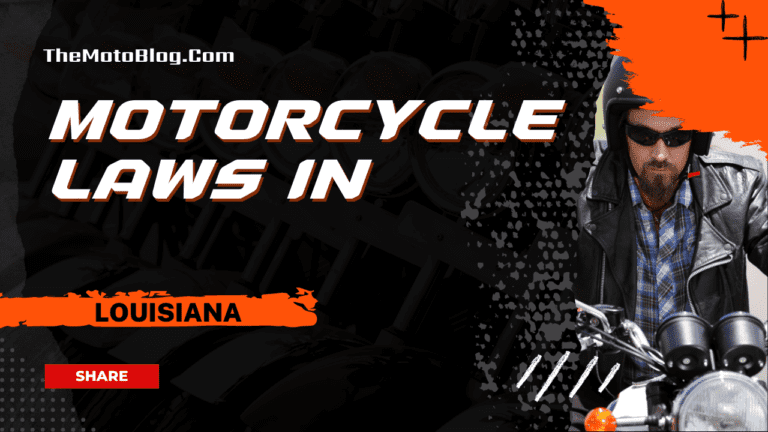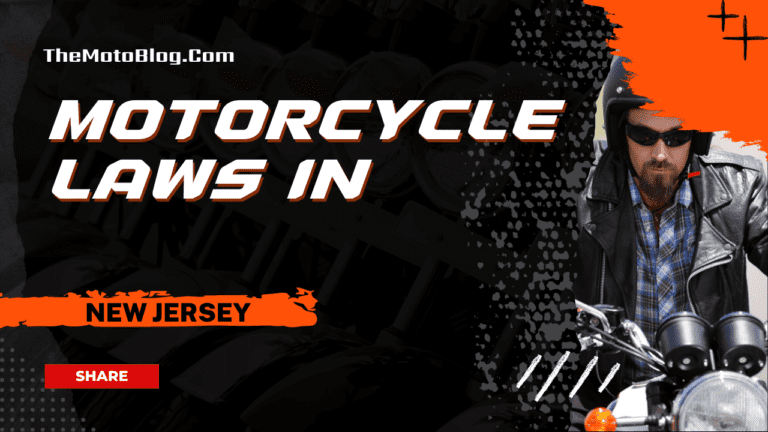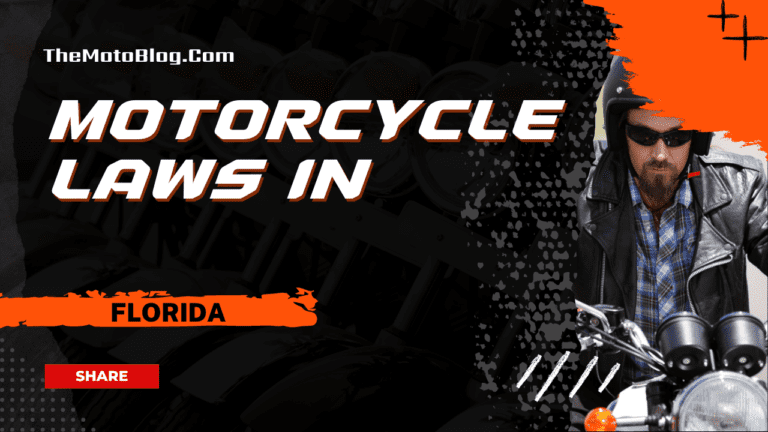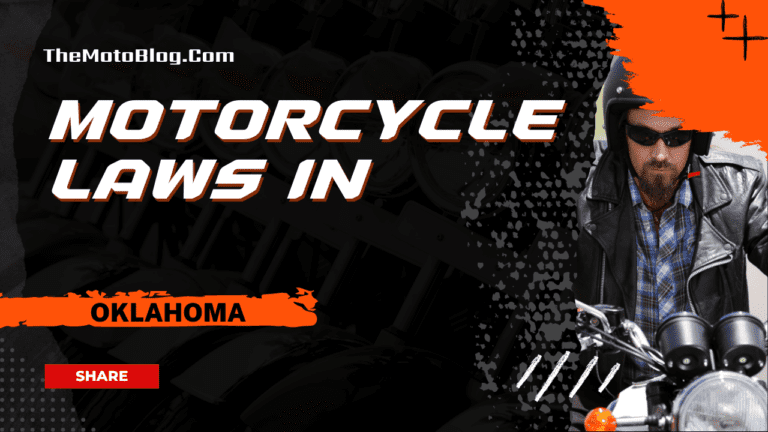Motorcycle Laws in Ohio: A Comprehensive Guide for Bikers
Ohio’s motorcycle laws strike a balance between rider freedom and public safety, reflecting the state’s commitment to responsible motorcycling. Situated at the crossroads of several major riding routes, Ohio shares borders with Pennsylvania to the east, Michigan to the north, Indiana to the west, Kentucky to the south, and West Virginia to the southeast. Understanding these regulations is crucial for both resident riders and those passing through the Buckeye State on their two-wheeled adventures.

| Requirement | Rule |
|---|---|
| Minimum Age | 15.5 years old |
| License Type | Class M License or motorcycle endorsement required |
| Helmet Requirements | – Mandatory for riders under 18 – Required during first year of licensure – Required for passengers if operator must wear one |
| Eye Protection | Required unless motorcycle has windscreen |
| Protective Gear | – Over-the-ankle footwear – Full-finger gloves – Long-sleeved shirt/jacket – Long pants |
| Insurance Minimums | – $25,000 bodily injury per person – $50,000 bodily injury per accident – $25,000 property damage |
| Lane Splitting | Not permitted |
| Lane Sharing | Two motorcycles may share one lane |
| Handlebar Height | Cannot exceed operator’s shoulder height when seated |
| Required Equipment | – 1-2 headlights with high/low beams – Red taillight with brake light – Turn signals (post-1968 motorcycles) – At least one brake – Rearview mirror – Horn – Muffler without cut-outs |
| Passenger Rules | – Separate firmly attached seat required – Passenger footrests required – Must face forward with one leg on each side |
| TIPIC Restrictions | – Valid for one year – Daylight hours only – No passengers – No interstate riding – Helmet and eye protection mandatory |
| Operating Without License Penalties | – First offense: Up to $1,000 fine/community service – Second offense: Up to $1,000 fine/6 months jail |
Licensing Requirements
To legally operate a motorcycle in Ohio, riders must obtain either a motorcycle license or endorsement. The minimum age requirement is 15.5 years old, and candidates must complete comprehensive testing including:
- Written knowledge assessment
- Vision screening
- Skills evaluation or Motorcycle Ohio Basic Course completion
The Temporary Instruction Permit Identification Card (TIPIC) comes with specific restrictions:
- One-year validity
- Daylight-only operation
- No passenger carrying
- No interstate riding
- Mandatory helmet and eye protection use
Safety Equipment Requirements
Helmet Laws
Ohio maintains specific helmet requirements:
- Mandatory for riders under 18
- Required during the first year of licensure
- Passengers must wear helmets if operators are required to
Additional Safety Gear
- Eye protection is mandatory unless the motorcycle has a windscreen
- Required protective gear includes:
- Over-the-ankle footwear
- Full-finger gloves
- Long-sleeved shirt or jacket
- Long pants
Operational Guidelines
Lane Usage and Riding Rules
- Motorcyclists are entitled to full lane usage
- Lane splitting is prohibited
- Two motorcycles may share a single lane
- Handlebars must not exceed shoulder height when seated
Required Equipment
- Headlight (1-2) with high/low beam capability
- Red taillight with brake light
- Turn signals (post-1968 motorcycles)
- At least one operational brake
- Rearview mirror
Insurance and Documentation
Minimum Coverage Requirements
Motorcyclists must maintain insurance with:
- $25,000 bodily injury per person
- $50,000 bodily injury per accident
- $25,000 property damage per accident
Passenger Regulations
Specific requirements for carrying passengers include:
- Firmly attached passenger seat
- Dedicated passenger footrests
- Forward-facing seating position
- Helmet use if operator must wear one
Vehicle Specifications
Equipment Standards
- Functional horn
- Rearview mirror
- Muffler without cut-outs
- Properly mounted license plate
Enforcement and Penalties
Operating without proper licensing can result in:
- Second offense: Up to $1,000 fine and/or 6 months jail time
- First offense: Up to $1,000 fine and/or community service
Understanding and adhering to Ohio’s motorcycle laws is essential for both safety and legal compliance. While these regulations may seem extensive, they’re designed to protect riders and ensure the safe operation of motorcycles on Ohio’s diverse roadways. For riders planning cross-state adventures, it’s worth noting that neighboring states like Pennsylvania, Michigan, and Indiana may have different requirements. Whether you’re a resident rider or just passing through, staying informed about these laws helps ensure a safe and enjoyable riding experience while avoiding potential legal issues. Remember that these laws are regularly reviewed and updated, so it’s advisable to check with the Ohio Bureau of Motor Vehicles for the most current regulations.
Motorcycle Laws in the US By States
If you liked this article, then please subscribe to our YouTube Channel for more Bike Videos. You can also find us on Instagram, Twitter and Facebook.
Disclosure: As an Amazon Associate, I earn from qualifying purchases. Read more about Amazon Affiliate Disclaimer.

Vishwanath Mathpati
I am Vishwanath Mathpati, a full-time Blogger and Motorcyclist from Bidar, Karnataka. I love writing about my Motorcycles Stories and Riding Gears on this blog.
Know More About Me.







